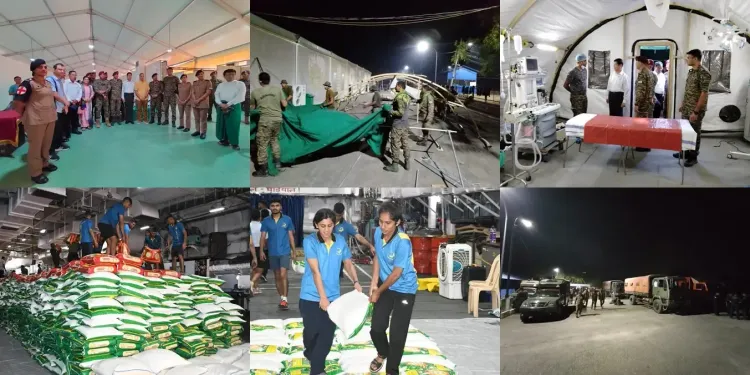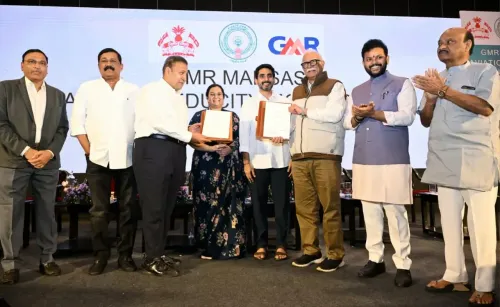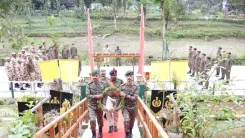Expanded Humanitarian Assistance: India Provides Relief to Myanmar

Synopsis
Key Takeaways
- Operation Brahma initiated by Indian Army.
- Deployment of a 200-bed field hospital in Mandalay.
- INS Karmuk and LCU 52 delivered 30 tonnes of supplies.
- Ongoing assistance with INS Gharial carrying 440 tonnes of aid.
- Over 2,000 lives lost due to the earthquake and aftershocks.
New Delhi, April 1 (NationPress) In response to a catastrophic 7.7-magnitude earthquake that hit Myanmar’s Mandalay region, India quickly offered assistance through an extraordinary humanitarian operation. The Indian Army and Navy mobilized their assets with steadfast determination, delivering both immediate rescue aid and enduring support to the impacted communities.
Under the initiative 'Operation Brahma,' the Indian Army dispatched a specialized 118-member team from the Shatrujeet Brigade, referred to as the “Airborne Angels.”
Airlifted by two robust IAF C-17 aircraft, they promptly set up a 200-bed field hospital in Mandalay, designed to perform critical surgeries and provide intensive in-patient care.
In a touching act, Myo Aung, the Chief Minister of Mandalay, toured the facility, witnessing firsthand the compassionate assistance being provided. This was shared by the Indian Army on X on Tuesday along with several images.
The operation reflects India's ‘Neighbourhood First’ policy and the enduring ethos of Vasudhaiva Kutumbakam (The world is one family), reinforcing solidarity with Myanmar in its time of need.
On the naval front, the Indian Navy’s response was equally prompt and significant.
INS Karmuk and Landing Craft Utility (LCU) 52 sailed from Sri Vijaypuram on March 30, carrying around 30 tonnes of vital relief supplies. They arrived in Yangon, delivering essential aid.
Shortly after, INS Satpura and INS Savitri reached Yangon on March 31 with approximately 40 tonnes of relief materials.
Currently, INS Gharial is being loaded with a significant 440 tonnes of crucial supplies, including rice, edible oil, and medicines, further enhancing India’s humanitarian outreach.
The aftermath of the earthquake has been devastating. The tremor, followed by a 6.4-magnitude aftershock, has led to over 2,000 fatalities, nearly 3,900 injuries, and left 270 individuals missing, as reported by Myanmar’s State Administration Council Information Team.
The epicenter was located merely 20 km from Mandalay—Myanmar’s vibrant second-largest city—resulting in widespread devastation across various regions.
In reaction, Myanmar’s National Disaster Management Committee declared a state of emergency in several affected areas, including Sagaing, Mandalay, Magway, parts of Shan State, Nay Pyi Taw, and Bago.
India’s swift and compassionate response not only highlights its strategic readiness but also the profound humanitarian connection that transcends borders during crises.










